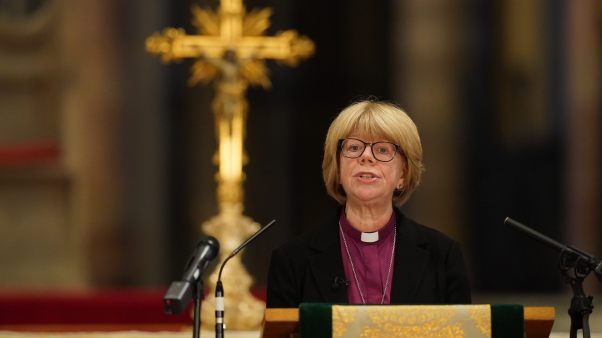It was one of the greatest disappointments of my young life. My middle-school catechism class teacher, and pastor at the time, explained to us that the makers of the film Road to Perdition (which was shooting in the area) had asked him if they could use our church in the movie.
He told us firmly: he’d politely but soundly refused.
To me, an almost-teenager, usually too keen to scoff at the adults (and even the pastors) in my life, this was a huge mistake. Our church—a red-brick, colonial-style building with a towering white steeple, its front door shaded by four wide, white columns, its only flaws a lack of air conditioning and a putridly yellow stained glass window—deserved to be in a movie. It had been chosen for its stately churchy-ness, its near-perfect adherence to a certain ideal of American church architecture. To reject such recognition made no sense. At least, it made no sense to me.
I understand now that my pastor’s rejection of the filmmakers’ offer was based in his understanding that a church is more than just its building—and that even this building, beautiful as it was, was more than its façade. It was a fragile, temporal, often all-too-easily-exploitable ribcage that housed, Lord willing, a heart fed and sustained by an eternal Spirit. To allow this building to be used for its own sake would deny that beating heart in favor of its earthly cage.
A few decades later, having forgotten that great but fleeting childhood disappointment, I moved to another state for work and started to look for a church. I found one very soon, housed in a brick building less grand than my childhood church, but with much in common: a proud steeple, a tall ceiling that drew the eye upward, wooden pews, bright windows whose panes were filled with abstract, colorful shapes. I felt at home in that building, and gradually began to feel more and more at home with its people, too.
My church, one fellowship, actually consists of two congregations who worship at different sites but who come together for retreats and other ministries. And while the site I attend is a 20-minute hike—a long way to travel in the finicky Missouri weather, or at 7:30 in the morning if I need to be there for worship rehearsal—the other site is five minutes from my apartment. I could jog there if I were so inclined. So why wouldn’t I?
The nearer site is beautiful in its own way, of course—it recently moved into a new building and has cleaned and refurbished the inside with much shared sweat and labor. It’s lovely and clean, with comfortable chairs, low white ceilings, and a wide, shallow worship space. Its people are wonderful, and its beating heart is Spirit-fed and sustained, beating in time with my site’s own. My old pastor was right, I admit with some resistance, to privilege the heart of the church over the aesthetic appeal of its surface.
But we are not just hearts and souls—we are physical beings in physical space, and we worship in and with physical spaces, too. Spaces guide our worship just as liturgy does. High ceilings draw our eyes up as our prayers and songs rise. Pews encourage us to sit with each other as individual chairs may not. Stained glass filters light across our faces as ritual and rite filter the Word into our hearts. My church may not win any beauty contests, but its meeting place feels like a church to me.
I still sort of wish that I could turn on Road to Perdition and, giddy, see my childhood church as a stop in the characters’ dismal journey. But that wish is a shallow one and doesn’t compare to the fulfillment that fills me when I worship at my church, as our songs and prayers rise up and flood the space above us. I choose to worship in this space because, far from giving my heart a better gilded cage, it draws my gaze up to the one who’s set it free.









